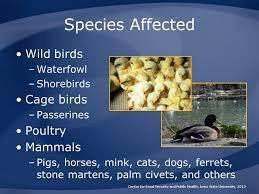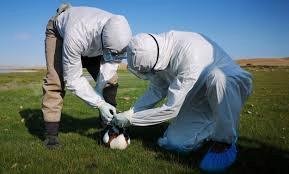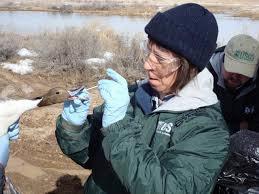 In a joint communication, the USDA-APHIS, the United States Geological Survey, the U.S. Fish and Wildlife Service and the National Flyway Council issued the Implementation Plan for Avian Influenza Surveillance in Waterfowl in the United States, Summer 2022-Winter 2023. The manual provides details on the collection of specimens, diagnostic procedures and analysis of results. The primary objective is to ascertain the distribution and spread of avian influenza viruses and their serotypes in wild waterfowl in the U.S. with specific concentration on seven dabbling duck species. Samples will be obtained from Agency and hunter-harvested ducks and live wild ducks from May 2022 through February 2023 along four flyways. It is intended that samples should be submitted to a pre-approved National Animal Health Laboratory. Data will be entered into the APHIS Veterinary Services Laboratory submission system website. Concurrently, with sampling, episodes of mortality will be investigated by the USGS, the` National Wildlife Health Center in Madison, WI. or State Veterinary Diagnostic Laboratories.
In a joint communication, the USDA-APHIS, the United States Geological Survey, the U.S. Fish and Wildlife Service and the National Flyway Council issued the Implementation Plan for Avian Influenza Surveillance in Waterfowl in the United States, Summer 2022-Winter 2023. The manual provides details on the collection of specimens, diagnostic procedures and analysis of results. The primary objective is to ascertain the distribution and spread of avian influenza viruses and their serotypes in wild waterfowl in the U.S. with specific concentration on seven dabbling duck species. Samples will be obtained from Agency and hunter-harvested ducks and live wild ducks from May 2022 through February 2023 along four flyways. It is intended that samples should be submitted to a pre-approved National Animal Health Laboratory. Data will be entered into the APHIS Veterinary Services Laboratory submission system website. Concurrently, with sampling, episodes of mortality will be investigated by the USGS, the` National Wildlife Health Center in Madison, WI. or State Veterinary Diagnostic Laboratories.

This report represents a “more of the same” approach to understanding the epidemiology of avian influenza virus among free-living bird species. The program will sample dabbling ducks with no attempt to determine whether non-anseriform or non-migratory bird species are involved in either introduction of H5 and H7 strains of avian influenza and their dissemination. The reality that cases of avian influenza continued during the June through September period in 2022 when migratory waterfowl, including the target species in this manual, were breeding, indicates that other birds may have been involved. It is known that raptors and some corvids are susceptible to avian influenza. During the ongoing 2021-2022 panornitic, a wide range of migratory and endemic birds have been impacted by avian influenza unlike previous events.
T he U.S. egg, turkey and broiler industries need to know the range of migratory and resident bird species that may be infected with Avian Influenza with or without clinical effects in order to plan and implement appropriate biosecurity measures. Those responsible for the health and well being of our commercial poultry population should display a higher level of imagination and respond to obvious realities. Certainly, the data from the proposed surveillance program will be of value even if it does not address the current crisis. The question is whether resources both in the field and the laboratory could be utilized to greater effect by addressing the epidemiology of avian influenza including how virus strains are introduced and disseminated. What the industry needs now is information on the species of birds and mammals that are susceptible and serve as short-term reservoir hosts and shedders. We do not need an academic exercise. Relevant epidemiologic information is required to upgrade current biosecurity procedures that appear inadequate in the case of some outbreaks in large well-managed egg-production complexes.
he U.S. egg, turkey and broiler industries need to know the range of migratory and resident bird species that may be infected with Avian Influenza with or without clinical effects in order to plan and implement appropriate biosecurity measures. Those responsible for the health and well being of our commercial poultry population should display a higher level of imagination and respond to obvious realities. Certainly, the data from the proposed surveillance program will be of value even if it does not address the current crisis. The question is whether resources both in the field and the laboratory could be utilized to greater effect by addressing the epidemiology of avian influenza including how virus strains are introduced and disseminated. What the industry needs now is information on the species of birds and mammals that are susceptible and serve as short-term reservoir hosts and shedders. We do not need an academic exercise. Relevant epidemiologic information is required to upgrade current biosecurity procedures that appear inadequate in the case of some outbreaks in large well-managed egg-production complexes.